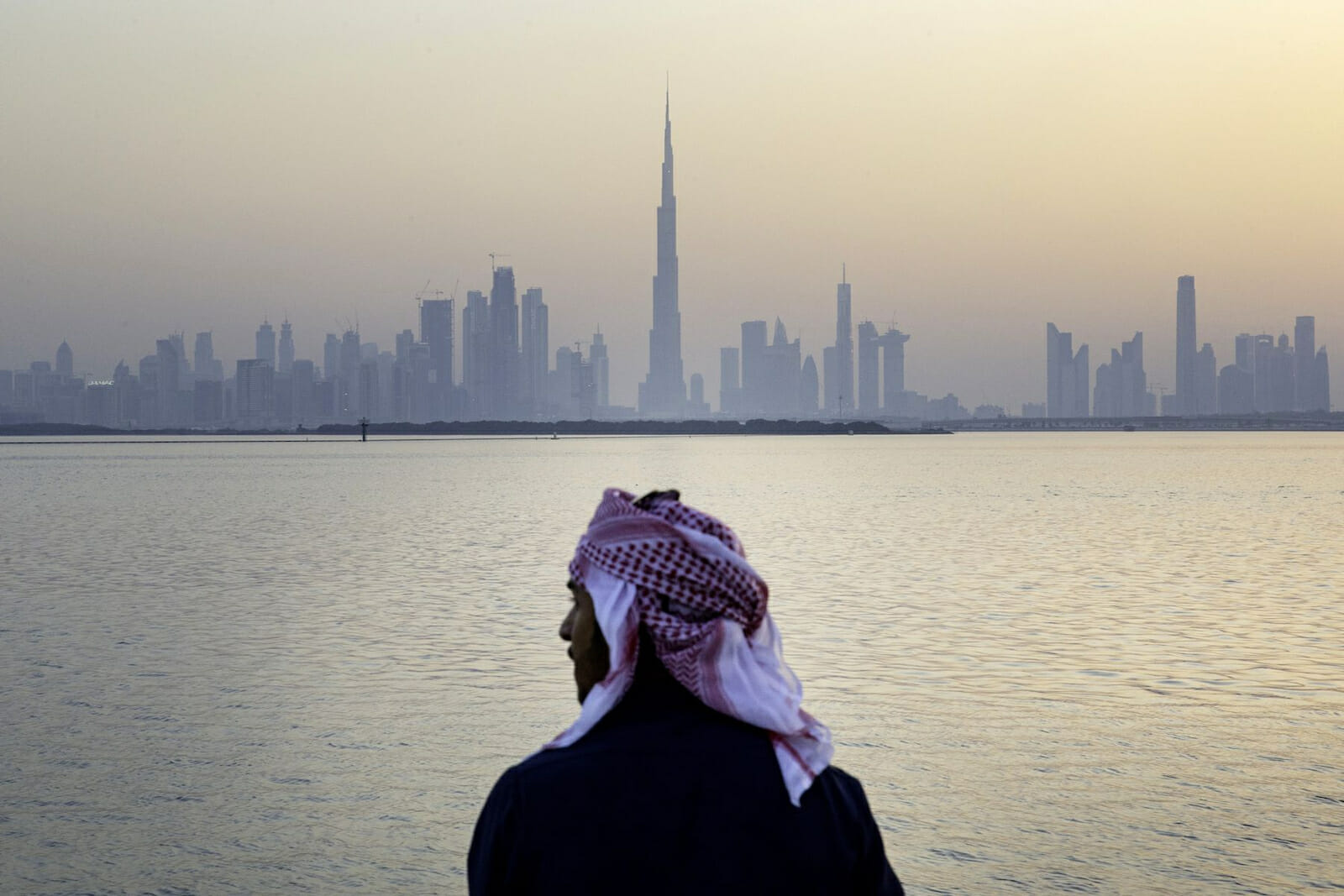
The Wave of Bank Mergers in the Gulf: Does Consolidation Mean Progress?
Recent moves in the Gulf Cooperation Council (GCC) states—Bahrain, Kuwait, Oman, Qatar, Saudi Arabia, and the United Arab Emirates (UAE)—regarding banking is again drawing attention to key structural issues in the region’s financial system, which brings back memories of the global economic crisis of the late 2000s. The 2008 global financial crisis highlighted the structural flaws to which GCC banks are exposed. Skyrocketing oil prices between 2001 and 2008 produced high banking sector liquidity and incentivized procyclical state budgets, thus fostering a boom of the non-oil real sector. This however also led to a considerably high credit concentration hence risk—in the real estate and construction sectors. The sharp drop of oil prices (and thus oil revenues) in 2008 seriously tested such vulnerabilities. Most governments across the Gulf, however, merely addressed them through capital injections and supportive monetary policies.
Since then, much seems to have changed in the Gulf governments’ economic policies, at least formally. All GCC governments have launched their own “Visions” for economic development in the forthcoming decades. Such development plans share a formal commitment to creating stronger economies by reducing the exposure to volatile oil prices. Such a target is to be achieved through significant investments in the private sector, alternative energy, knowledge-based economic development, and more. Specifically, the financial sector would have to be consolidated in order to support private sector growth and advanced capital markets.
Instead of remaining words on paper, the prolonged decline in oil prices resumed in 2014 put such commitments to test. In the face of plummeting revenues, the banking sectors of Gulf countries have seen an unprecedented wave of state-supported bank mergers and acquisitions. In Oman, Oman Arab Bank and Alizz Islamic Bank are set to merge after obtaining regulatory approval and signing a MoU. In Qatar, Barwa Bank and International Bank of Qatar should combine soon and form the new, sharia-compliant Lusail Bank; in a joint statement, the two banks declared that the initiative is in line with Qatar National Vision 2030. In Saudi Arabia, Saudi British Bank and Alawwal Bank have finalized a merger operation in October 2018. In a press release, Saudi British Bank described the merger as proceeding along with the Kingdom’s Vision 2030 national transformation. Furthermore, National Commercial Bank and Riyad Bank are recruiting advisers on a potential merger which could produce the Gulf’s third bigger lender with $182 billion in assets. A cross-border merger is also underway between Kuwait Finance House and Ahli United Bank from Bahrain and it will form the largest Islamic bank of the world. This move may be interpreted as an attempt to jumpstart the Islamic finance market given that Dubai’s Islamic Finance market is not taking off as had been planned by the Emirate.
The most dynamic market in terms of bank M&A is to be found in the UAE. Already in 2007 the merger of National Bank of Dubai with Emirates Bank International, with the blessing of the ruler of Dubai Sheik Mohammed bin Rashid Al Maktoum, created the largest banking group in the region by assets. In 2017, such a merger was overtaken by First Abu Dhabi Bank through the combination of First Gulf Bank and National Bank of Abu Dhabi. In yet another twist of the merger saga, Abu Dhabi Commercial Bank has purchased Union National Bank and Al Hilal Bank to create the third largest bank in the Emirates. Abu Dhabi Crown Prince Sheikh Mohammed bin Zayed al-Nahyan tweeted: “The merger…is in line with the economic vision of the UAE and…will enhance the competitiveness of the national economy and its future aspirations.” Furthermore, a joint statement from the banks noted that the new group will contribute to the growth and diversification of the UAE’s economy.
All these tectonic movements in the GCC’s banking sectors have been generally expected and welcomed by economic observers. Analysts at Moody’s attribute such consolidations to lower oil prices, subdued credit demand, rising regulatory requirements, and high competition spurred by overcrowded banking markets. Oman has 20 banks for 4.6 million people, Bahrain has around 30 for 1.5 million people and the UAE have 60 banks serving 9.5 million people. Hence, mergers are expected to cut operating and funding costs, boost profitability, robustness, and efficiency and improve economies of scale.
Notwithstanding the clear benefits of such a wave of consolidations, the GCC banking sector remains exposed to certain weaknesses. Such flaws are symptoms of the broader structure of the economy of the GCC and highlight the political obstacles in achieving the objectives of the various “Visions.” First and foremost, the lion’s share of the GCC economies remain firmly under the direct and indirect control of the state and thus of the ruling families. Specifically in the banking sector, according to a Dubai-based financial adviser, the numerous financial arms of GCC states (including wealth funds, state pensions, and social funds) have shareholdings in more than 80 percent of the GCC’s top 50 banks by assets. In turn, more than 80 percent total value of GCC governments’ budgets is financed by oil revenues. Such linkages pose serious risks to the sustainability of the GCC banking systems, regardless of the size of the banks. The available liquidity of GCC banks relies heavily on governments’ deposits and thus on the price of oil. Rapid credit growth in periods of rising oil prices is shown to lead to high levels of asset impairment once prices fall. Hence, as long as banks will be at the mercy of floating prices and dependent on government assets and control, it is unlikely that consolidation will lead to solid financial systems and sustainable economic diversification.
Besides the exposure of the GCC banking systems to cyclical pressures, their ownership structure has further negative implications for their long-term sustainability. Firstly, as governments are major shareholders, Fitch expects high willingness from the public sector to support the banking sector. Executives of the region do not rely on citizens‘ taxes nor votes and are consequently more likely to favor the bailout of banks they co-own. Arguably, GCC banks operate under an incentive structure that makes them prone to market exposure and inefficiencies. And what’s more, there are no mechanisms put in place to ensure that the region’s banks are shielded from political interference. On the contrary, banks are often used as the financial arms of the governments. In February 2019, for instance, thirteen UAE banks waived $98.28 million worth of debts of Emirati citizens to ensure “social stability,” according to the General Director of the Crown Prince Court of Abu Dhabi. The ensemble of such practices has led to a seriously high concentration risk, as GCC banks tend to lend to few politically connected obligors and to the construction and real estate sectors.
The 2010 property crash in Dubai and the repercussions that it had on the profits of the investment company Dubai World provide a foretaste of what might happen under worsening economic conditions. These moves should be seen in the wider context of the Abu Dhabi versus Dubai tussle over fiscal policy and debt.
Overall, the GCC is in a situation where transformation and vision plans are impacting the banking sector and rearranging the financial landscape. Banking mergers are illustrative of a changing environment where the impact of VAT in some states in addition to the shifting geoeconomic environment have made banks sensitive to state-driven mandates get their finances under control. Economic resilience in the Gulf is threatened by the institutional weaknesses of the GCC political economies. Consolidation might serve the purpose of enhancing the short-medium term solvency of GCC banks but it does not address the cornerstone of the problem.
